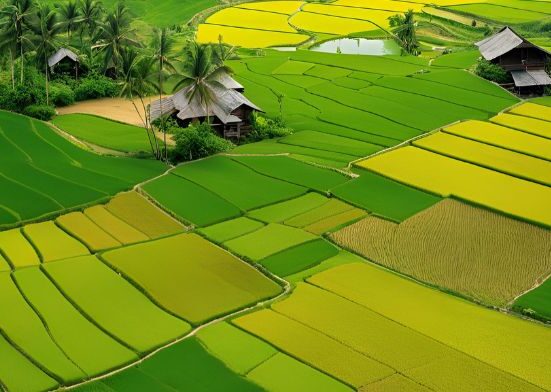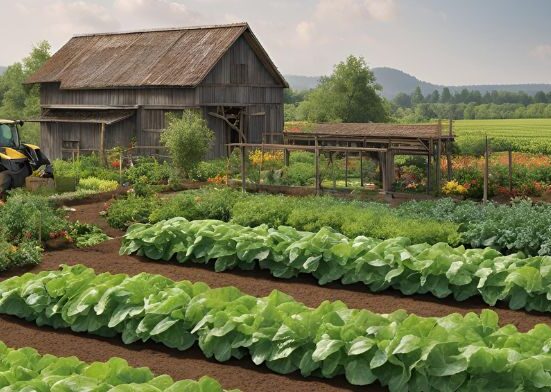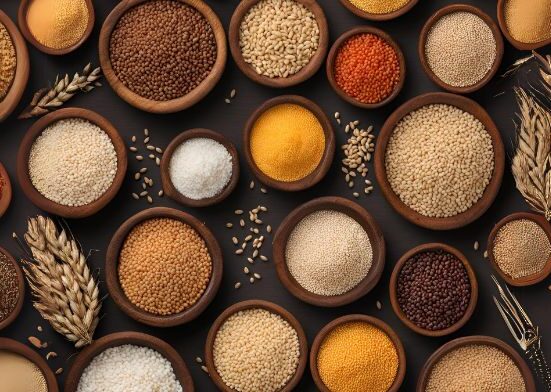Homesteading is more than a lifestyle; it’s a movement toward self-sufficiency, sustainability, and a deeper connection with the land. At its heart, homesteading involves producing your own Food, managing resources, and reducing reliance on external systems like grocery stores, utility companies, or mass-produced goods. Whether you’re cultivating a sprawling rural farm or nurturing a small herb garden on an urban balcony, homesteading offers a path to greater autonomy and fulfillment.
Picture this: you wake to the chirping of birds, harvest fresh tomatoes from your garden, preserve jams for winter, and maybe even power your home with solar energy. This isn’t a distant dream but a reality for homesteaders worldwide. This guide will explore what homesteading means today, its historical roots, core principles, benefits, and practical steps to start your journey. We’ll simplify the process, making it accessible whether you have acres of land or just a corner of your apartment.
What is Homesteading?
Homesteading is about creating a life of greater independence and resilience. At its heart, it’s a return to basics—where individuals and families provide for their needs through gardening, raising livestock, preserving Food, and developing practical homestead skills.
But homesteading isn’t about rejecting modern life. It’s about blending old-fashioned skills with contemporary knowledge, making thoughtful choices about Food, resources, and sustainability. Some homesteaders live completely off-grid, while others enjoy homestead practices alongside full-time jobs and city homesteader conveniences.
The History of Homesteading
 The term homesteading originally referred to the U.S. Homestead Act of 1862, when the government granted land to settlers willing to build homes and farm the land. Families grew crops, raised animals, and built communities—literally carving lives from the define homesteading wilderness.
The term homesteading originally referred to the U.S. Homestead Act of 1862, when the government granted land to settlers willing to build homes and farm the land. Families grew crops, raised animals, and built communities—literally carving lives from the define homesteading wilderness.
While the frontier days are gone, the idea of self-reliance and working the land has never disappeared. Today, “homesteading” describes a voluntary lifestyle choice rather than a legal land grant. People everywhere are adopting homesteading values as a way to live more sustainably, reduce dependence on corporations, and create security in uncertain define homestead times.
Modern Homesteading Explained
Modern Homesteading Explained is a lifestyle movement that blends traditional self-sufficiency with today’s resources and technology. Unlike old-fashioned homesteading, which often meant complete isolation, modern homesteading adapts to urban, suburban, and rural settings. It focuses on growing your own Food, raising small livestock, preserving harvests, reducing waste, and using renewable energy where home stead possible.
Many modern homesteaders also embrace DIY skills, natural remedies, and sustainable practices to live more independently from commercial systems. It’s not about abandoning modern life but about creating balance—living simply, saving money, and connecting with the land. Whether you have a backyard garden, a rooftop setup, or acres of farmland, modern homesteading offers a flexible path toward resilience, sustainability, and mindful living.
Why People Choose Homesteading
Homesteading appeals to people seeking a more straightforward, more self-sufficient way of life. Many choose it to reconnect with nature, grow their own Food, and reduce reliance on modern consumer systems. It offers the freedom to live sustainably, practice traditional skills, and embrace a lifestyle rooted in independence and resilience. For some, it’s about providing healthier, organic Food for their families, while others value the financial savings that come from producing rather than purchasing.
Homesteading also fosters a deep sense of accomplishment, as individuals learn to garden, raise livestock, preserve Food, and create a more self-reliant household. Beyond practicality, many are drawn to the peace, slower pace, and fulfillment that homesteading brings, creating a life focused on family, community, and the land. Ultimately, homesteading is about choosing purpose and sustainability over convenience and consumerism.
Key Elements of a Homestead
 A homestead is more than just a piece of land—it’s a lifestyle rooted in self-sufficiency and connection to nature. The key elements of a homestead usually begin with land, providing space for gardens, orchards, and livestock. A productive vegetable garden and fruit trees ensure a steady food supply, while animals like chickens, goats, or cows contribute eggs, milk, meat, and natural fertilizer. Water sources, whether from wells, rainwater collection, or natural streams, are essential for both people and plants. A secure shelter or farmhouse provides living space, often designed with sustainability in mind.
A homestead is more than just a piece of land—it’s a lifestyle rooted in self-sufficiency and connection to nature. The key elements of a homestead usually begin with land, providing space for gardens, orchards, and livestock. A productive vegetable garden and fruit trees ensure a steady food supply, while animals like chickens, goats, or cows contribute eggs, milk, meat, and natural fertilizer. Water sources, whether from wells, rainwater collection, or natural streams, are essential for both people and plants. A secure shelter or farmhouse provides living space, often designed with sustainability in mind.
Storage areas, such as root cellars or barns, help preserve harvests and house tools. Renewable energy sources, like solar panels or wood stoves, further enhance independence. Altogether, these elements create a balanced, self-reliant homestead that supports both daily living and long-term resilience.
Growing Food
Growing Food is a rewarding practice that connects people to the earth and promotes self-sufficiency. Whether in a backyard garden, community plot, or containers, cultivating fruits, vegetables, and herbs allows you to enjoy fresh, nutritious produce while reducing reliance on store-bought goods. It fosters sustainable living, supports local ecosystems, and encourages healthy eating habits. From preparing soil and planting seeds to nurturing plants and harvesting crops, growing your own Food is both practical and fulfilling, offering a sense of accomplishment and a closer connection to nature’s homestea cycles.
Raising Animals
Raising animals is the practice of caring for livestock or pets for Food, companionship, or agricultural purposes. It involves providing proper shelter, nutrition, healthcare, and a safe environment to ensure their growth and well-being. From chickens and cows to goats and rabbits, responsible animal husbandry supports sustainable farming, boosts productivity, and promotes ethical treatment. It also teaches valuable skills such as observation, patience, and problem-solving. Whether for hobby farming or commercial purposes, raising animals connects humans to nature, fosters self-sufficiency, and contributes to a balanced modern homesteading ecosystem.
Preserving and Storing Food
Food preservation ensures nothing goes to waste and provides nourishment year-round. Common methods include:
- Canning fruits, jams, and vegetables
- Freezing garden harvests
- Dehydrating herbs and snacks
- Fermenting sauerkraut, kimchi, or kombucha
Building Skills and Crafts
Homesteading is also about self-reliant skills:
- Bread baking
- Soap making
- Sewing and mending clothes
- Carpentry and repairs
Alternative Energy and Sustainability
Some homesteaders integrate renewable energy to reduce reliance on outside systems:
- Solar panels
- Wind turbines
- Composting toilets
- Rainwater collection
Homesteading in Different Settings
Homesteading is a flexible lifestyle that adapts to where you live, whether it’s a rural farm, a suburban backyard, or even an urban apartment. In rural areas, homesteaders may cultivate extensive gardens, raise livestock, and live off expansive land. Suburban homesteaders often maximize smaller yards with vegetable patches, fruit trees, composting, and chickens. Even in cities, homesteading thrives through container gardening, rooftop farming, vertical growing, and preserving modern homesteaders foods.
Each setting offers unique challenges and rewards: rural life provides space and self-reliance, suburban areas balance community with self-sufficiency, while urban homesteading proves that sustainability can flourish anywhere. Regardless of location, the essence of homesteading remains the same—living simply, producing more of your own Food, and reducing dependence on outside systems. It’s about creating a sustainable, intentional lifestyle suited to your environment.
Rural Homesteads
Rural homesteads are self-sufficient living spaces nestled in the countryside, blending a simple lifestyle with nature’s rhythms. These homesteads often feature small-scale farming, gardens, livestock, and renewable energy solutions, allowing families to produce much of their own Food. Life on a rural homestead emphasizes sustainability, independence, and a deep connection to the land. With charming rustic homes, open fields, and a slower pace, rural homesteads offer a peaceful retreat from urban life, fostering resilience, practical skills, and a harmonious balance between human needs and the natural environment.
Suburban Homesteads
Suburban homesteads blend self-sufficiency with modern living, transforming ordinary suburban yards into productive, sustainable spaces. These homesteads often feature vegetable gardens, fruit trees, chickens, and small-scale composting, allowing families to grow fresh Food and reduce reliance on stores. Beyond food production, suburban homesteads promote eco-friendly practices, such as rainwater harvesting, pollinator-friendly landscaping, and renewable energy use. They offer a balance of practicality and lifestyle, providing both fresh, homegrown resources and a deeper connection to nature, all while thriving within the constraints of suburban neighborhoods.
Urban Homesteads
City dwellers may homestead on balconies, rooftops, or community gardens. Practices include container gardening, composting, and making homemade goods.
Benefits of Homesteading
 Homesteading is more than a lifestyle—it’s a return to self-sufficiency, connection with nature, and mindful living. One of the primary benefits of homesteading is the ability to grow your own Food, ensuring access to fresh, organic produce while reducing dependence on commercial supply chains. Raising animals for eggs, milk, or meat adds another layer of sustainability, fostering a deeper understanding of where Food comes from. Homesteading also promotes financial resilience by lowering grocery bills and creating opportunities for small-scale entrepreneurship, such as selling produce, eggs, or handmade goods.
Homesteading is more than a lifestyle—it’s a return to self-sufficiency, connection with nature, and mindful living. One of the primary benefits of homesteading is the ability to grow your own Food, ensuring access to fresh, organic produce while reducing dependence on commercial supply chains. Raising animals for eggs, milk, or meat adds another layer of sustainability, fostering a deeper understanding of where Food comes from. Homesteading also promotes financial resilience by lowering grocery bills and creating opportunities for small-scale entrepreneurship, such as selling produce, eggs, or handmade goods.
Beyond the tangible, homesteading nurtures physical and mental well-being. Daily outdoor work encourages exercise, while gardening and animal care reduce stress and promote mindfulness. Homesteaders often experience a stronger sense of community, as they share resources, skills, and knowledge with neighbors and local networks. Moreover, homesteading fosters environmental stewardship, encouraging sustainable practices like composting, rainwater harvesting, and renewable energy use.
Challenges of Homesteading
- Time and labor: Homesteading requires dedication.
- Initial investment: Tools, seeds, and animals can be costly.
- Learning curve: Mistakes are part of the process.
- Zoning laws and restrictions: Some areas limit livestock or gardens.
- Balancing modern life: Jobs and homesteading can compete for time.
How to Start Homesteading
Starting a homestead can be a rewarding journey toward self-sufficiency, sustainability, and a simpler lifestyle. “How to Start Homesteading” guides beginners through the essential steps to establish their own homestead, whether on a small plot or a larger piece of land. Learn how to plan your space efficiently, grow your own fruits and vegetables, raise animals responsibly, and implement sustainable practices such as composting, rainwater collection, and renewable energy.
This guide also covers practical skills like preserving Food, managing a garden, and creating a seasonal routine that aligns with nature. With helpful tips, realistic advice, and motivational insights, it equips aspiring homesteaders with the confidence to begin their journey, reduce reliance on external resources, and embrace a lifestyle rooted in independence, resilience, and connection to the land.
Step-by-Step Beginner’s Plan
- Start small: Grow herbs or a few vegetables.
- Learn preservation: Try freezing or drying Food.
- Raise simple animals: Chickens or rabbits are beginner-friendly.
- Practice DIY: Make bread or soap.
- Expand gradually: Add fruit trees, bees, or goats.
Skills to Learn
- Gardening basics
- Composting
- Cooking from scratch
- Food preservation
- Basic carpentry and repairs
Mistakes to Avoid
- Starting too big, too fast
- Ignoring zoning or HOA rules
- Forgetting seasonal planning
- Neglecting animal care needs
Homesteading Community and Resources
 A homesteading community offers a supportive network for individuals and families striving for self-sufficiency, sustainable living, and a closer connection to nature. These communities provide invaluable resources, including practical guides on gardening, livestock care, food preservation, renewable energy, and DIY projects. Members can share experiences, exchange tips, and learn from each other’s successes and challenges, creating a rich environment for growth and learning. Online forums, local meetups, workshops, and social media groups help homesteaders access expert advice and connect with like-minded individuals.
A homesteading community offers a supportive network for individuals and families striving for self-sufficiency, sustainable living, and a closer connection to nature. These communities provide invaluable resources, including practical guides on gardening, livestock care, food preservation, renewable energy, and DIY projects. Members can share experiences, exchange tips, and learn from each other’s successes and challenges, creating a rich environment for growth and learning. Online forums, local meetups, workshops, and social media groups help homesteaders access expert advice and connect with like-minded individuals.
Whether you’re a beginner exploring backyard gardening or an experienced homesteader managing a small farm, these communities foster collaboration, creativity, and resilience. By joining, you gain not only practical knowledge but also a sense of belonging, inspiration, and encouragement on your journey toward a sustainable, self-reliant lifestyle.
Homesteading as a Lifestyle
Homesteading as a lifestyle is more than just a return to self-sufficiency—it’s a conscious choice to live closer to nature, cultivate your own Food, and reduce reliance on modern conveniences. This lifestyle embraces gardening, raising livestock, preserving Food, and practicing sustainable living techniques that nurture both the land and the household. Beyond practical skills, homesteading fosters independence, resilience, and a deep connection to the rhythms of the seasons.
It encourages mindful consumption, DIY projects, and resourceful living, creating a meaningful balance between work, creativity, and family life. Whether in rural settings or on a small suburban plot, homesteading invites individuals and families to reclaim autonomy, embrace sustainability, and experience the satisfaction of providing for themselves while respecting the environment. It’s a lifestyle that blends tradition, innovation, and intentional living.
Conclusion:
Homesteading is a journey of learning, independence, and fulfillment. It’s not about living without modern conveniences but about choosing sustainability and self-reliance wherever possible. By starting small and growing your skills, you can create your own homestead—whether it’s a backyard garden, a suburban chicken coop, or a whole rural property. Homesteading reminds us that life can be simpler, richer, and more rewarding when we reconnect with the land, our Food, and our hands.
FAQ:
What is Homesteading?
Homesteading is a lifestyle of self-sufficiency, where individuals or families grow their own Food, raise animals, and produce goods to meet their basic needs. It often combines gardening, livestock care, food preservation, and sustainable living practices.
Is Homesteading the same as Farming?
Not exactly. While farming typically focuses on large-scale food production for sale, homesteading emphasizes self-reliance and sustainability. Homesteaders often produce for personal use rather than profit.
Can anyone become a Homesteader?
Yes! Homesteading can be adapted to fit any space, from rural properties to small urban lots. Beginners can start small, like growing a garden or keeping a few backyard chickens, and gradually expand.
Do you need a lot of land for Homesteading?
Not necessarily. While more land allows for larger gardens and more animals, homesteading can be done on small plots, even in urban settings, through container gardening, vertical gardens, or community farming.
Is Homesteading Expensive to start?
Starting costs vary. Small-scale homesteading can begin with a modest garden or a few backyard animals. Costs grow with the scale and complexity of your homestead. Many homesteaders prioritize DIY skills and recycling to reduce expenses.







